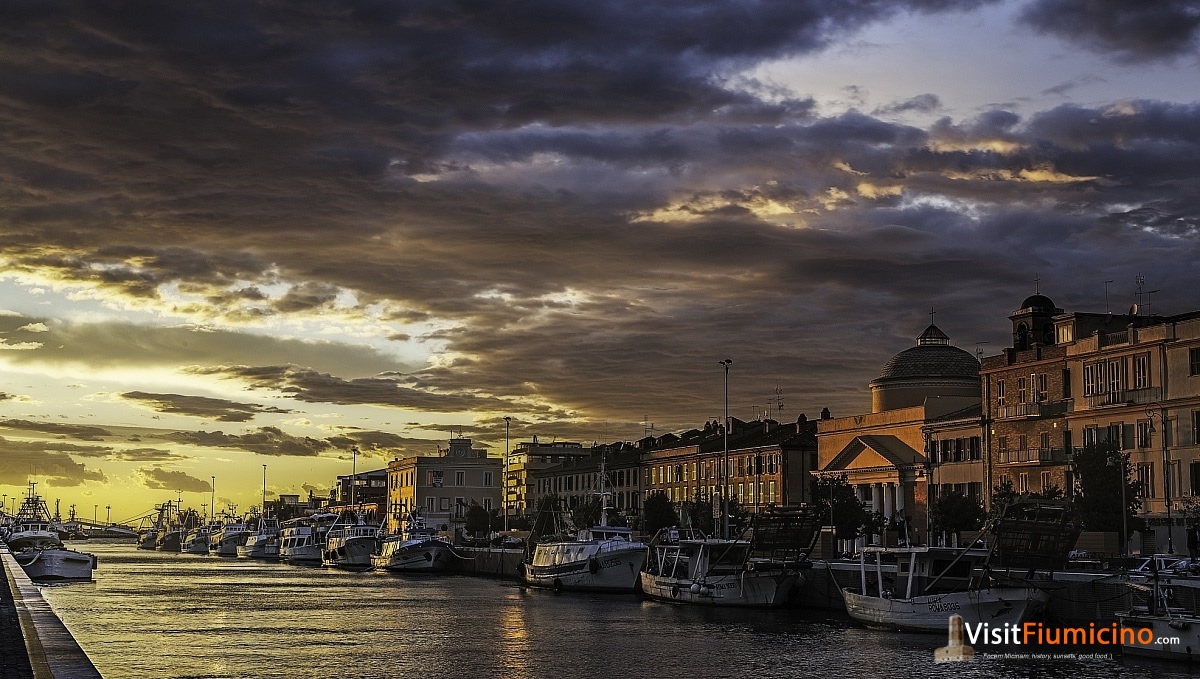
Along the Canal which takes its name from its creator, Trajan's grave, arose and developed the ancient city of Portus which soon became the most important port on the Mediterranean.
With the fall of the Roman Empire, barbarian invasions and Saracen ones, the former glory of Portus went out.
During the medieval period the Trajan's basin, almost completely flooded by the waters, was converted into a fish farm.
Only at the end of the 16th century (1580) with the construction of wharves and docks for the fishing fleet, commissioned by Pope Gregory XIII, the area became a fishing village alive and thriving.
Reflecting the changing eras and defensive needs of the Papal States the Popes Alexander VI and Clement XIV had built watchtowers and surveillance, whose ruins remain today to witness the progressive advancement of the line Coast.
On what is now known as Via Torre Clementina between 1823 and 1828, for the interest of Commerce Treasurer Belisario Cristaldi, the seaside town of Fiumicino, thanks to the wisdom of one of the leading architects of the time, Giuseppe Valadier.
To enter into the village here is an ancient train of 1880 which tells some curiosities of this village.
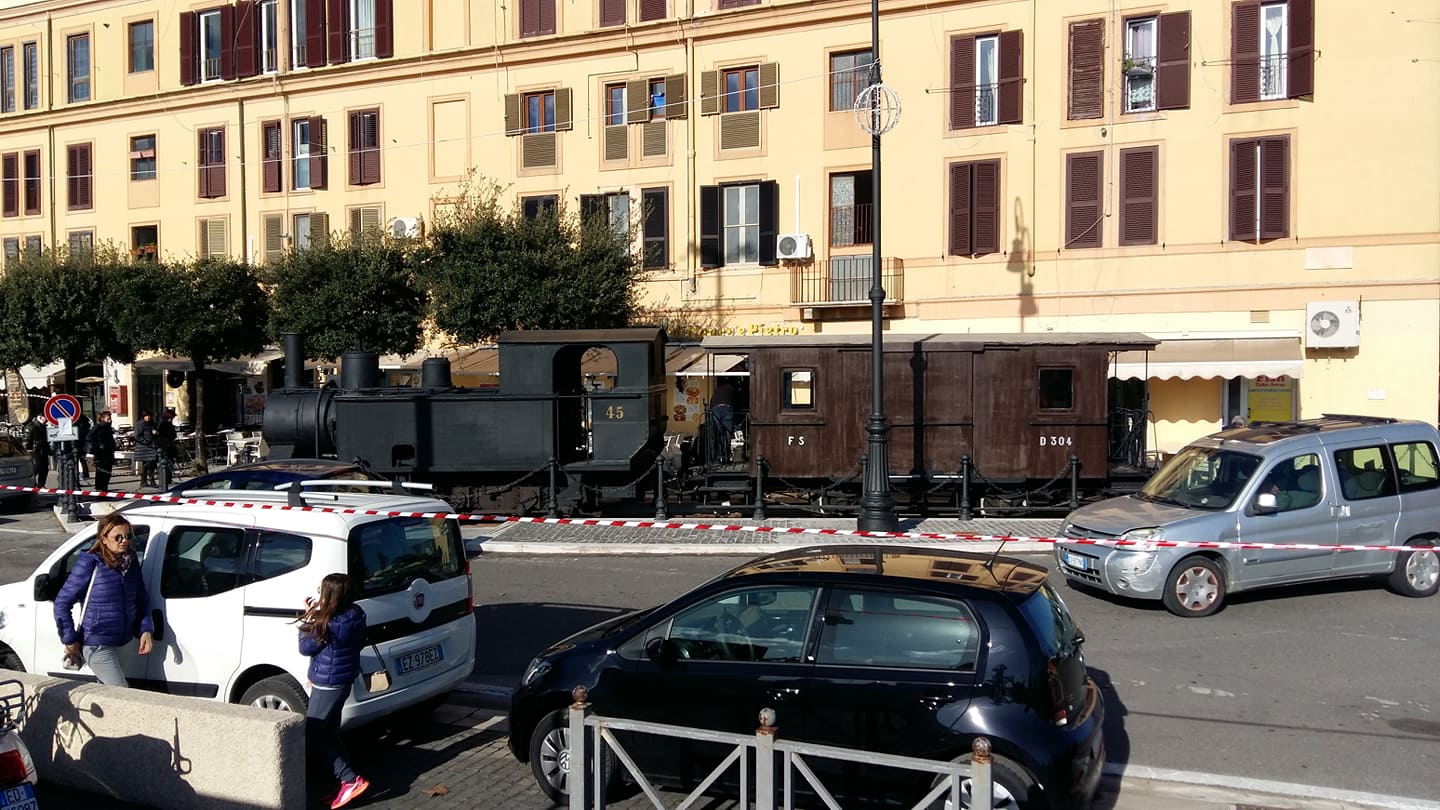
During the enlargement and upgrading of via torre clementina ancient tracks that arose centuries ago housed the trains carrying goods from the River in Rome and vice versa.
The section, resurfaced during the redevelopment of the village Valadier, was left visible on the surface just to house the locomotive and one carriage.
The old medium, from Solihull, was donated to the municipality by a private collector. It is a a locomotive ' ticket ' of 1880 the Slm Winterthur, assembled in Naples and Sardinia service beyond the 1905, when in Italy by private railroads all became public. The FS has never been as belonging to the minor railways of Sardinia, a narrow gauge. He worked until at least the years ' 60 of the last century.
The old locomotive, which some citizens have sympathetically nicknamed "ciufciuf", has become the infopoint of the municipality and will be the point of access and information to all the tourists who visit our region.
At the end of the 18th century, the town of Fiumicino consisted of a few huts around the old tower Nicolina or of Pius V, which stood on the left bank of the waterway. Over the years, though the inhabitants increased and the time was ripe now to provide for the needs of the population, which is increasingly steadily he lived and worked in Fiumicino.
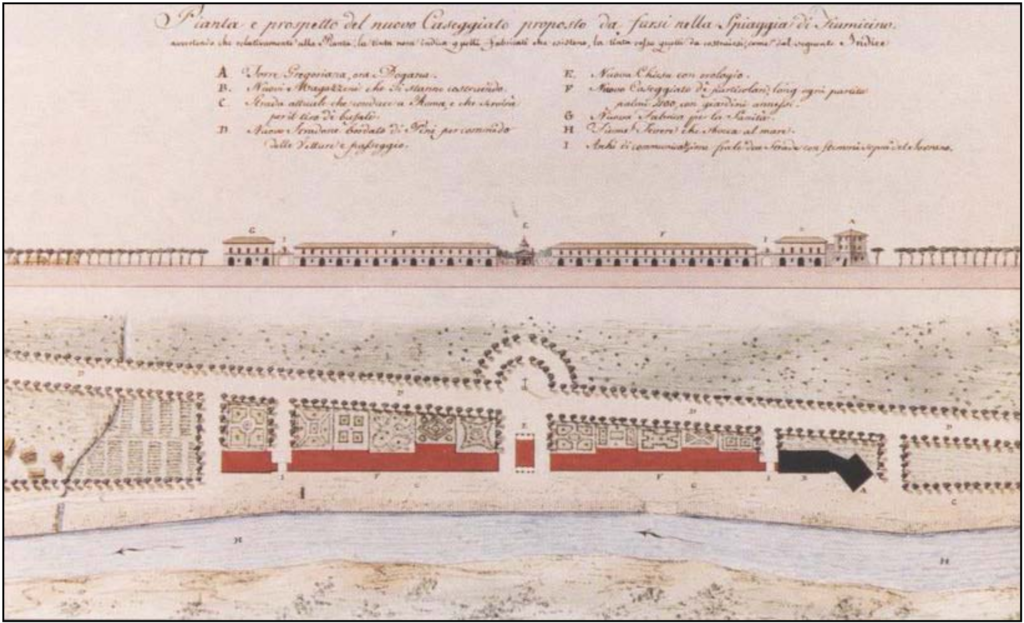
The original plan of the original design of the village Valadier
It was therefore decided to create a series of comfortable houses for residential purposes, and since they are designed to move the village on the right bank of the Canal, given also the continuing difficulties created by the mobile bridge, it was decided to focus on housing a new Church. The design of the new village was imagined by Valadier, architect Certified factories, his autograph is preserved at the Accademia di San Luca in Rome.
This drawing was made when it was already in place the construction of the new building for the customs, leaning against the Alexandrian Tower, the Valadier called "Gregorian". The long blocks of flats are interrupted in the Middle by the new Church "with clock," and end with a twin-building than customs, such use of "health". Behind the houses one imagines a long tree-lined Avenue, with large formal gardens, the front facing the channel is reserved for port activities, while Chamber of Commerce and civil buildings, arches, surmounted by the crest of the reigning sovereign. The subsequent realization, completed between 1823 and 1827, the Treasurer of the Apostolic Camera, Monsignor Belisario Cristaldi, will undergo some changes, mainly concerning the Church and the houses that were built more in behind and not in line with the Customs and the House for health care. The tree-lined Avenue was built in its place, for the benefit of those who lived there, kept vegetable gardens, while the front of the channel also became the main street of the new town, built between la torre Alessandrina disused and the impressive torre Clementina.
Today the village Valadier is an elegant and pleasant walk by the River, with a large and important curb, completely renovated and embellished through the work of 2018, which houses craft shops, restaurants and pubs where you can stop for a pleasant dinner or a sparkling aperitif.
A magical place full of history, but also modern and lively for spending leisure hours and taste.
The Church of Santa Maria della Salute Port was built to a design by Cav. Giuseppe Valadier in the year 1823, under the pontificate of Pius VII, where it began on new country between the Alexandrian and Clementina towers.
On 10 February 1828, reigning Pope Leo XII, Card. Bartolomeo Pacca, Bishop of Porto, solemnly consecrated the new church dedicated to Santa Maria della Salute, a Port as the marble plaque inside above the main door.
On the drum, from which rises the beautiful and perfect Dome, mosaic is the legend:
"TU ES MARIA VIRGO PORTUS SALUTIS ET STELLA MARIS"
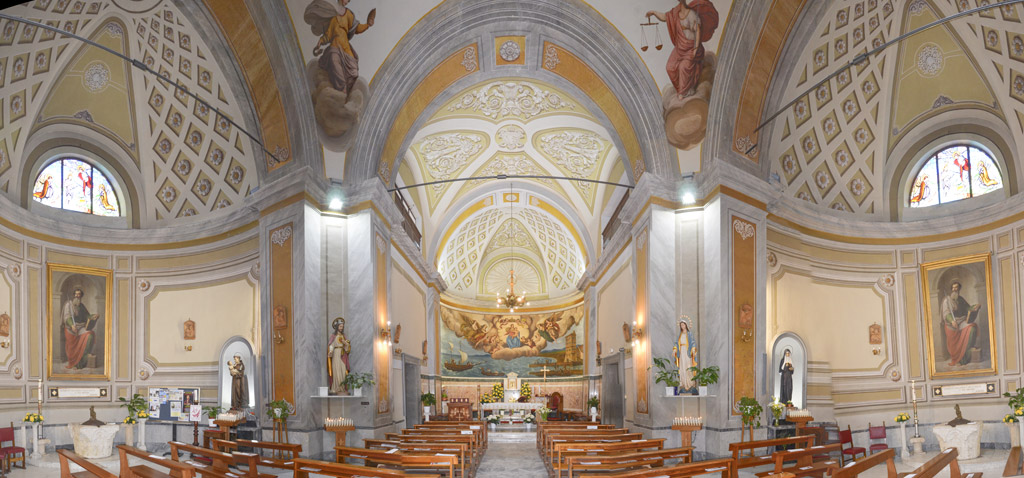
The nave of the Church of Santa Maria Harbour health
Over the years it underwent several renovations, up to the consolidation of the entire structure began in the year 2005.
Inside you can admire the interesting and huge fresco in the apse, dating back to 1845: the fresco measures 37 m2. It shows the Madonna in protection of sailors who are about to enter the always dangerous river mouth.
You see also the Torre Clementina, brick houses, huts and the profile of the hills beyond the via Aurelia.
The work of anonymous artists themselves should be the depictions of the four cardinal virtues:
prudence, justice, fortitude and Temperance.
The figures are placed on the pendentives that support the dome, forming a strong and harmonious whole, which gives a feeling of greatness and inner peace at the same time.
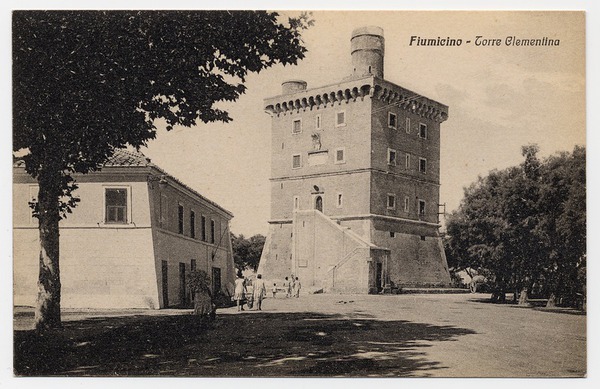
La torre Clementina was built by Clement XIV in 1773, hence the name. The tower was built in just under five hundred metres from Torre Alessandrina. The building was the original project kept in State archives, was destroyed by the Germans in 1944. The current pilot tower was built after the war to replace the glorious torre Clementina.
The work was created to replace the other towers is no longer capable of surveillance following the retreat of the coastline. The tower was square in shape, measuring 20 meters in height with side that reached 10 meters, was an imposing, elegant and solid and needed to defend against Saracen raids from the sea they climbed on to the Tiber and raided the territories adjacent to the river.
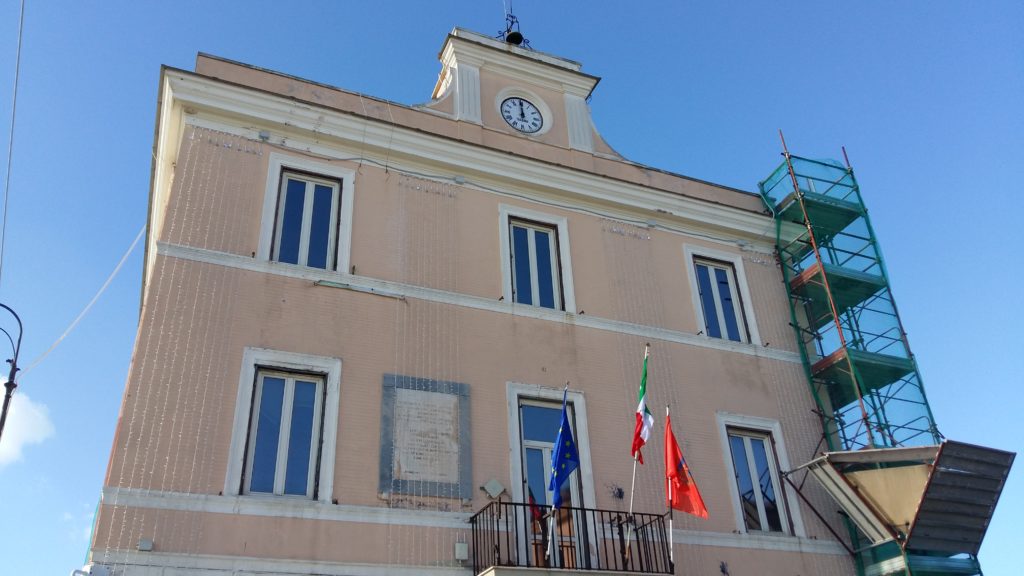
At the end of World War I, there was a severe outbreak of malaria across the nation and this leads some Giovan Battista Grassi, known world famous zoologist, working there again. In 1918, he founded, in fact, a "Malaria Observatory"in Fiumicino, in the delta of the River Tiber, where he studied the mosquito flight behaviour and made a large epidemiological study on the incidence of malaria in the area, suggesting various methods of control.
The home and Office of the Observatory where he studied fats is the building you meet along via torre clementina, in the square named after the Italian zoologist known: it's a big, tall, an imposing building which houses a clock on its façade. In the past he was also municipal seat.
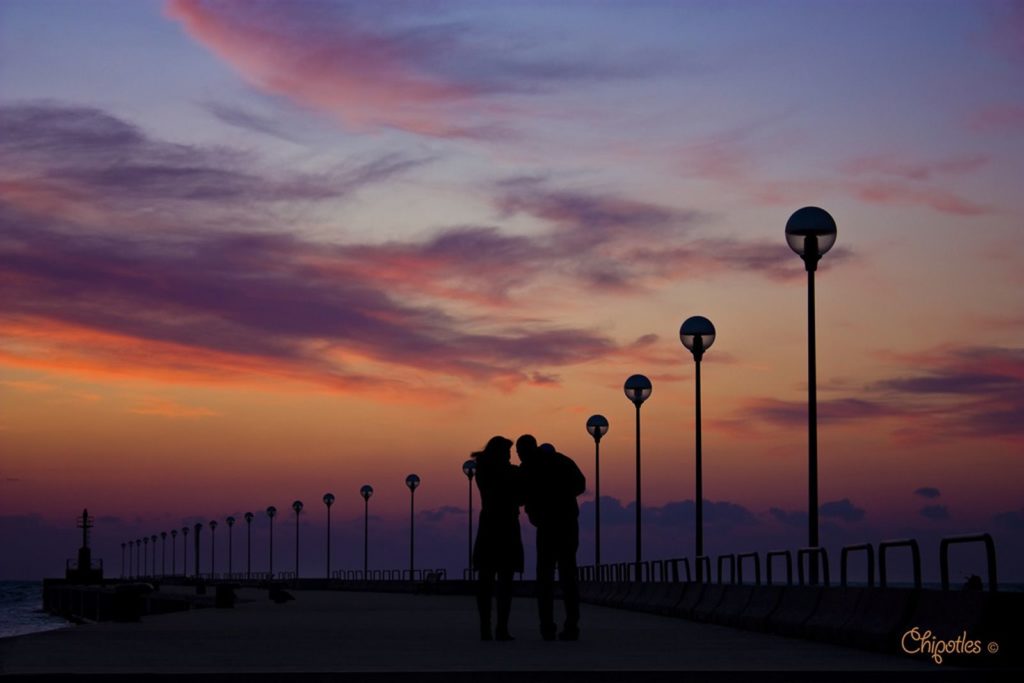
Lungotevere di Fiumicino is a pleasant walk along the Trajan ditch, waterway designed and built by Emperor Trajan nearly 2000 years ago.
Between old fishing boats, glittering restaurants and places to enjoy good street food or wine bars where you can taste good wine, is always pleasant stroll along its quays, listening to the sound of waves crashing on the stands of the port channel.
Continuing the walk we arrive to the last part of the Tiber, where the river meets the sea.
Here we can get on a little Red Lantern that we will offer an amazing sea view while a light sea breeze there sfiorierà the face and the only sound you will hear will be that of the seagulls and the waves on the rocks.
From there you can see the horizon, the sea and on the right, if the weather allows it, you can see the promontory of Civitavecchia and the Tolfa and Allumiere.
If you decide to stay all day in our beautiful territory, maybe eating at one of our fine restaurants, the advice we can give you is to do this walk off into the sunset, you will see one of the famous sunsets of Fiumicino, a spectacle of nature is unique in the world.
(cover photo by Egidio distant)
